#chelidonium
Text
Coming suddenly round a corner into a glade of silver birch trees Edmund saw the ground covered in all directions with little yellow flowers – celandines.
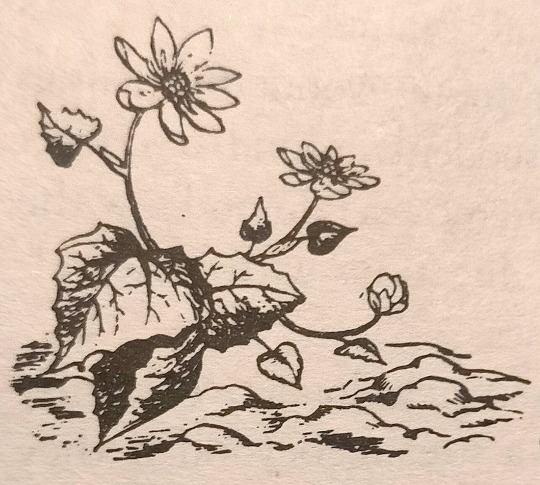
"The Chronicles of Narnia: The Lion, the Witch and the Wardrobe" - C. S. Lewis
#book quotes#the chronicles of narnia#the lion the witch and the wardrobe#c s lewis#around the corner#glade#silver birch#rosids#fagales#betulaceae#betula#betula pendula#celandine#ranunculales#papaveraceae#papaveroideae#chelidonieae#chelidonium#yellow flowers
4 notes
·
View notes
Text


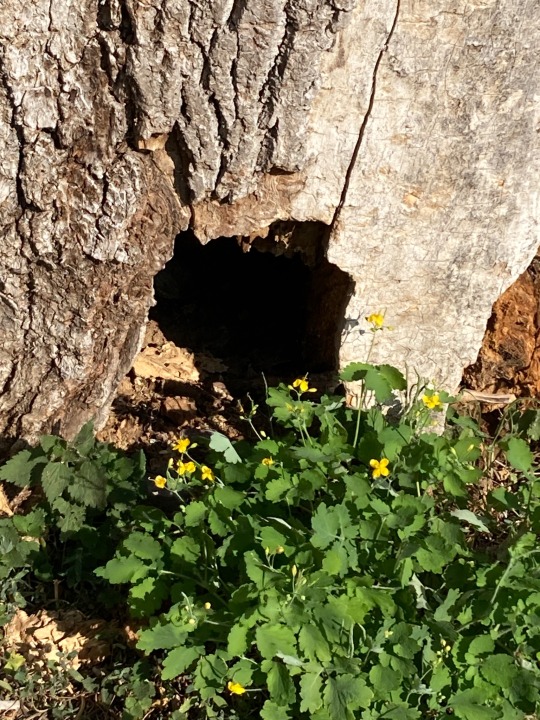
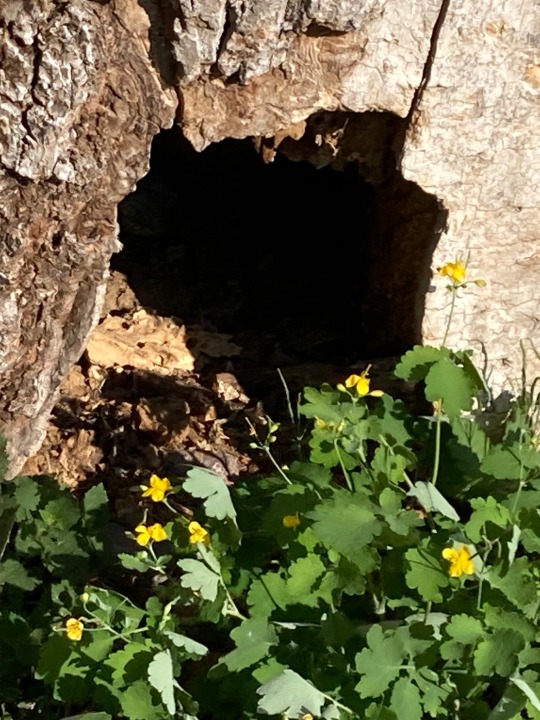
4 notes
·
View notes
Text

Chelidonium majus
#chelidonium#herbe aux verrues#floral#blossom#flower#nature#mother nature#photographers on tumblr#spring
2 notes
·
View notes
Photo

#liverdisorder #chelidonium #caricuspapaya #carduusmarianus #kalmegh #medicineforliverdamage #homoeopathymedicineforliverdamage #homoeopathyworks #homoeopathy #bhms #homoeopathyrocks #homoeopathictherapeutics #homeopathicremedies #bhmslife #homeopathicremedy #homoeopathymemes #homoeopathyvideo #homoeopathyreels #homoeopathyacademy #homoeopathy_academy @homoeopathy_academy @homoeopathy_academy @homoeopathy_academy https://www.instagram.com/p/Cd_HgfnlrF8/?igshid=NGJjMDIxMWI=
#liverdisorder#chelidonium#caricuspapaya#carduusmarianus#kalmegh#medicineforliverdamage#homoeopathymedicineforliverdamage#homoeopathyworks#homoeopathy#bhms#homoeopathyrocks#homoeopathictherapeutics#homeopathicremedies#bhmslife#homeopathicremedy#homoeopathymemes#homoeopathyvideo#homoeopathyreels#homoeopathyacademy#homoeopathy_academy
0 notes
Note
pete and ryan are making out. it's sloppy and messy and they're friends with benefits so that part is normal. they're quick and desperate and ryan pushes pete against the wall. his hands try to climb up under pete's shirt to feel his warm skin, but pete grabs his wrists and stops him. ryan pulls away, panting.
"uh uh," pete says. they're both switches, but ryan wants to top tonight. it seems pete has different ideas. "no. you need to be punished."
ryan cocks his head to the side, eyebrows shooting up to his hairline. "you're serious?"
"as a heart attack."
ryan doesn't attempt to break pete's grip on his wrists. he furrows his eyebrows.
"you've gained a couple pounds, ry. you're supposed to stay skinny. we talked about this," pete says, then switches their positions. it's a bit awkward since pete is so much shorter, but they make due. "i should spank you til your ass is red and raw. maybe i'll edge you til you're sobbing."
ryan lets out a soft sound. he bites his bottom lip as pete holds his skinny body against the wall. "pete..."
"no. don't talk. i should gag you. i'm so disappointed in you, ryan." pete shakes his head. he releases ryan's wrists and steps away. "bend over my fucking knee. you need to be spanked."
(can i be chelidonium anon 🤭)
.
17 notes
·
View notes
Video
n71_w1150 by Biodiversity Heritage Library
Via Flickr:
The instructive picture book, or, Lessons from the vegetable world Edinburgh :Edmonston & Douglas, 87 Princes Street,1858. biodiversitylibrary.org/page/59644194
#Fruit#Juvenile literature#Pictorial works#Plants#Vegetables#Lloyd Library and Museum#bhl:page=59644194#dc:identifier=https://biodiversitylibrary.org/page/59644194#taxonomy:common=Celandine#taxonomy:common=Fool’s parsley#taxonomy:binomial=Chelidonium majus#taxonomy:binomial=Aethusa cynapium#flickr#celandine#fool's parsley#chelidonium majus#aethusa cynapium#greater celandine#fool's cicely#poison parsley#poison#poisonous plants
0 notes
Text
Floral Devil Lore
Source: The Complete Language of Flowers by S. Theresa Dietz
Do your own research on the toxicity of these plants before using them in any capacity.
Aletris farinosa: Devil's Bit
Artemisia absinthium: There is a legend that Artemisia absinthium marked the path that Satan took on his exit from the Garden of Eden.
Atropa belladonna: Devil's Berries, Devil's Cherries
*Cardamine: is supposedly an ingredient in the “Nine Herbs Charm” of tenth century England that was intended to be used in battle to fend off the perceived power used against them by the Serpent. (Given the Christian influence on the poem, the Serpent may or may not reference the Devil.)
Centranthus ruber: Devil's Beard
Chelidonium: Devil's Milk
Chiranthodendron pentadactylon: Devil's Hand Tree
Conium: Devil's Porridge
Cuscuta: Devil's Guys, Devil's Hair, Devil's Ringlet
Cylindropuntia imbricata: Devil's Rope Cactus, Devil's Rope Pear
Datura: Devil's Apple, Devil's Cucumber, Devil's Trumpet, Devil's Weed, Hell’s Bells
Daucus carota: Devil's-plague
Epipremnum aureum: Devil's Ivy
Ferula assa-foetida: Devil's Dung; symbolism chase away the devil
Hyoscyamus niger: Devil's Eye
Hypericum perforatum: Chase Devil, Scare Devil
Mandragora: A person who received one for free would never be free, for the person would be in the grip of the Devil.
Nigella damascena: Devil in the Bush
Nolina lindheimeriana: Devil's Shoestring
Ocimum basilicum: The Devil's Plant
Oxalis tetraphylla: charm against the Devil
Petroselinum crispum: Devil's Oatmeal
Podophyllum peltatum: Devil's Apple
Pteridophyta: Devil's Brushes
Rauvolfia tetraphylla: Devil Pepper
Sambucus nigra: The English believe that burning its logs will bring the Devil into the house.
Sansevieria: Devil's Tongue
Secale cereale: Dealings with the Devil, Devilry
Stenocereus eruca: Creeping Devil
Succisa pratensis: Devil's Bit, Devil's Bit Scabious; In folk tales, the short black roots of this plant are the result of the Devil biting off the roots in anger after hearing a rumor that the plant may have had curative powers against the Bubonic Plague.
Verbena officinalis: Devil's Bane
Vinca minor: Devil's Eye
#satan#devil#lucifer#satanism#luciferianism#theistic satanism#satanblr#satanist#theistic luciferianism#luciferian#my post
61 notes
·
View notes
Text
chelidonium majus - new year new coloured piece!!

#choc draws#homestuck#i misspelled that 4 times!!#anyway#jade harley#<333333#coloured#SYNESTHESIA EXPLOITATION WIN
96 notes
·
View notes
Photo

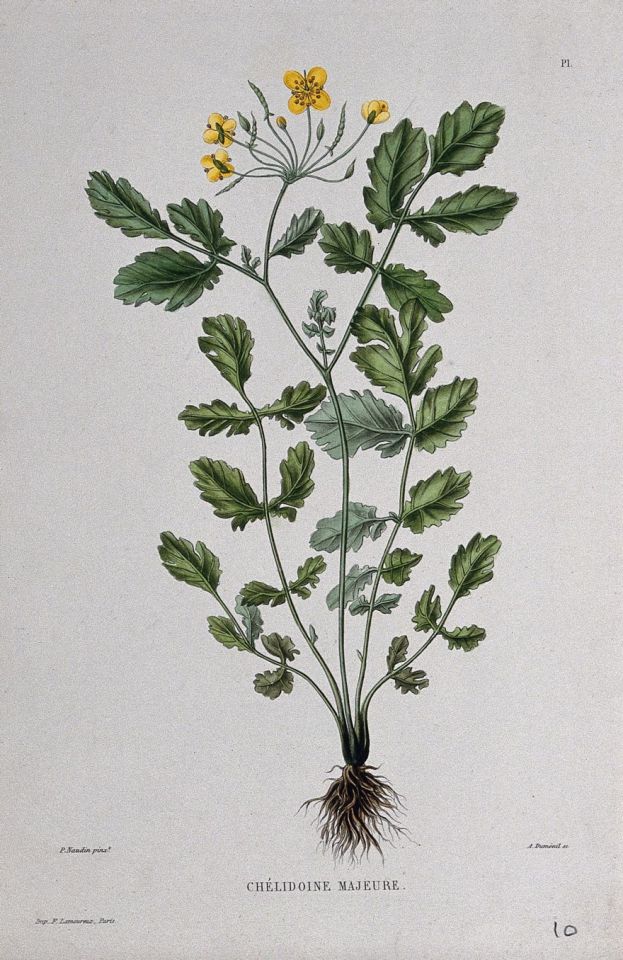

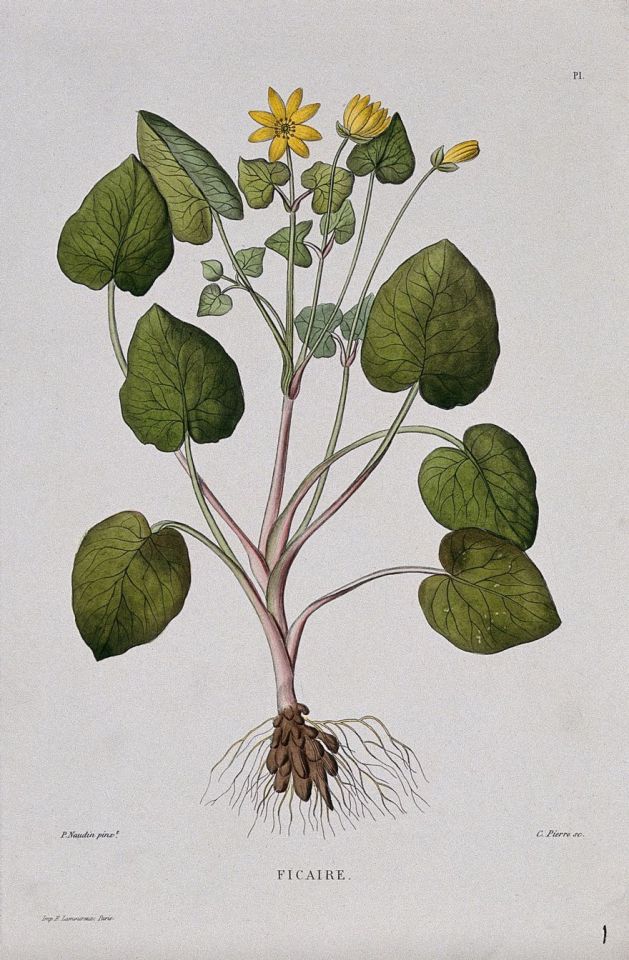



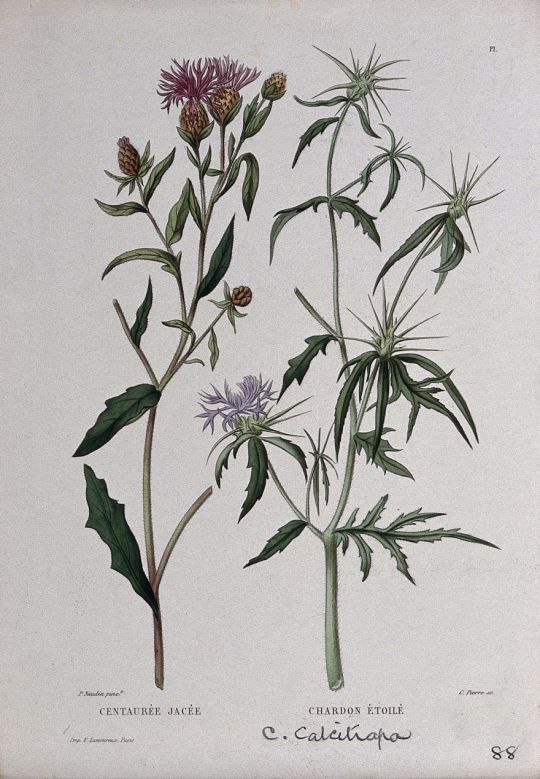

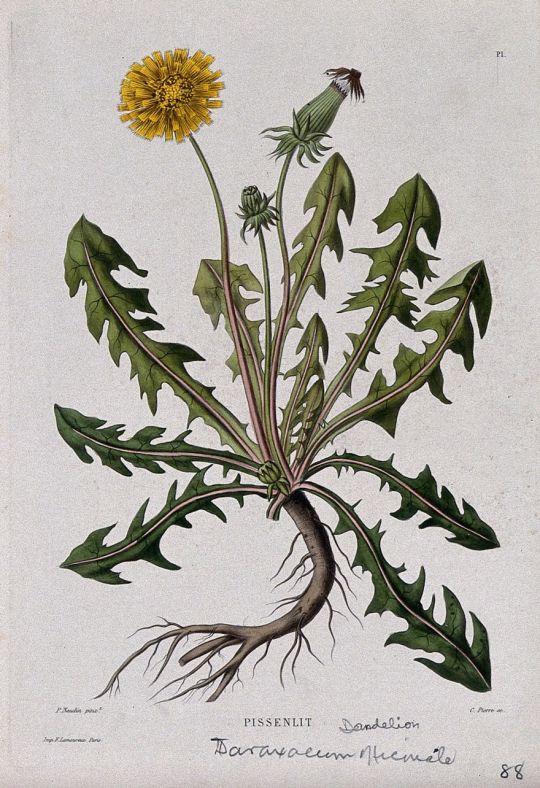
1) Red poppy (Papaver rhoeas).
2)) Greater celandine (Chelidonium majus)
3) Monkshood (Aconitum napellus)
4) Celandine (Ranunculus ficaria
5) Holy thistle (Silybum marianum) and Canada thistle (Cirsium arvense)
6) Kingcups (Caltha palustris) and Pasque-flower (Pulsatilla vulgaris)
7) Sage (Salvia officinalis) and Meadow sage (Salvia pratensis
8) Knapweed (Centaurea jacea) and Star-thistle (Centaurea calcitrapa)
9) Thorn-apple or Jamestown weed (Datura stramonium)
10) Dandelion (Taraxacum officinale).
Coloured etchings by C. Pierre (circa 1865) after P. Naudin.
Courtesy of Wellcome Collection
208 notes
·
View notes
Text
Cater Diamond — language of flowers

all the same but in my tweet (+ pictures)
chelidonium — joy
sunny-yellow gerbera's are happy messengers of friendship and joy. they are commonly given as gifts to friends and family and for no reason at all to cheer them up. also the giver of gerberas expresses his sincere sympathy and wishes for a good mood
jasmínum — modesty, shyness
yellow peony — new beginnings and happiness
yellow rose — happiness
orange rose — joy of meeting
amaranth — faithfulness, constancy of love (not necessarily for a person, but for example for a cause you love)
arbutus — 'love only you'
artemisia — the feminine essence, dignity. wormwood was believed to protect against witches and mermaids, and to drive all manner of evil out of the house. however, wormwood smoke is used by magicians to communicate with otherworldly entities
ranunculus — childishness, wealth
mimosa — sensitivity, bashfulness, shyness, 'i hide my feelings'
in the language of flowers: yellow is the colour of joy and happiness
49 notes
·
View notes
Text
Holistic Approach to Gall Bladder Stone Treatment: Homoeopathy Explained
Discover the efficacy of homoeopathy in treating gall bladder stones naturally. Learn about gentle remedies and holistic care for lasting relief.
Gall bladder stones, also known as gallstones, can cause significant discomfort and disrupt daily life. While conventional treatments like surgery may seem like the only solution, homoeopathy offers a holistic approach that addresses the root cause of the problem. Let's explore how homoeopathy can provide effective treatment for gall bladder stones.

Understanding Gall Bladder Stones:
Gallstones are hardened deposits that form in the gall bladder, a small organ responsible for storing bile produced by the liver. These stones can vary in size and composition, ranging from tiny particles to large masses. Gallstones often develop due to imbalances in bile composition, leading to the crystallization of cholesterol or bilirubin.
Homoeopathic Perspective:
Homoeopathy views diseases as an imbalance in the body's vital force and aims to restore harmony through natural remedies. In the case of gall bladder stones, homoeopathic remedies work by stimulating the body's innate healing mechanisms, thereby helping to dissolve the stones and prevent their recurrence.
Gentle Remedies for Gall Bladder Stones:
Homoeopathic medicines for gall bladder stones are selected based on individual symptoms and constitution. Common remedies like Lycopodium, Chelidonium, and Berberis Vulgaris are often prescribed to alleviate pain, reduce inflammation, and facilitate the expulsion of stones. These remedies are gentle yet potent, offering relief without the side effects associated with conventional medications.
Addressing Underlying Factors:
Homoeopathy doesn't just treat the symptoms; it addresses the underlying factors contributing to gall bladder stone formation. This may include dietary modifications, lifestyle changes, and stress management techniques. By addressing the root cause of the problem, homoeopathy helps prevent recurrence and promotes overall well-being.

Holistic Care for Lasting Relief:
In addition to homoeopathic remedies, holistic care plays a crucial role in managing gall bladder stones. This includes adopting a healthy diet rich in fruits, vegetables, and whole grains while limiting processed foods and saturated fats. Regular exercise, adequate hydration, and stress reduction techniques such as yoga and meditation further support the body's natural healing process.
Conclusion:
Gall bladder stones can be a source of considerable discomfort, but homoeopathy offers a gentle and effective alternative to conventional treatments. By addressing the underlying imbalances in the body, homoeopathic remedies promote lasting relief and overall well-being. If you're seeking a natural approach to gall bladder stone treatment, consider consulting with a qualified homoeopathic practitioner to explore your options.
2 notes
·
View notes
Text
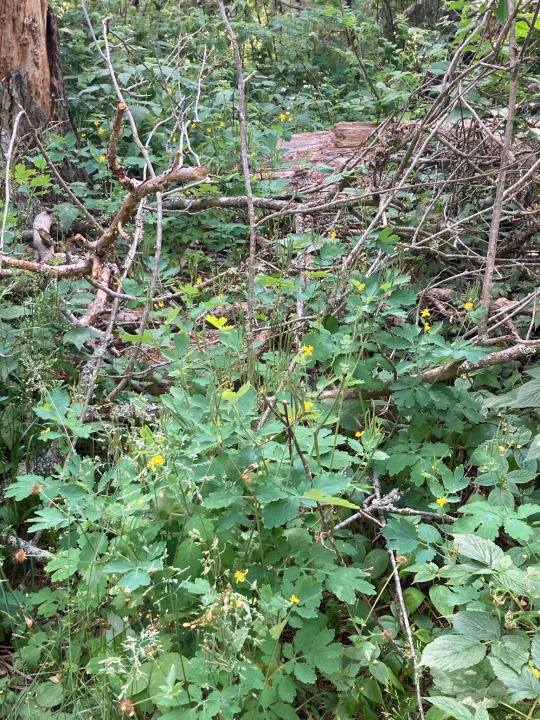


1 note
·
View note
Text
Liste de plantes utilisées en médecine au Moyen-Âge
1. Mandragore (Mandragora officinarum) : Utilisée comme sédatif et anesthésique. Associée à de nombreuses superstitions, on lui attribuait des pouvoirs magiques.
2. Angélique (Angelica archangelica) : Considérée comme une plante protectrice contre les maladies et le mal. Utilisée pour traiter les troubles digestifs et les infections respiratoires.
3. Consoude (Symphitum oficinale) : Utilisée en cataplasme pour accélérer la cicatrisation des plaies et des fractures. Soulage la douleur et réduit l’inflammation.
4. Chélidoine (Chelidonium majus) : Employée pour traiter les verrues et autres affections cutanées. Également utilisée pour ses propriétés détoxifiantes pour le foie.
5. Fenouil (Foeniculum vulgare) : Utilisé pour faciliter la digestion et comme remède contre les troubles respiratoires.
6. Millefeuille (Achillea millefolium) : Employé pour arrêter les saignements et traiter les blessures, ainsi que pour ses propriétés anti-inflammatoires et analgésiques.
7. Tanaisie (Tanacetum vulgare) : Utilisée comme vermifuge et pour traiter divers maux, y compris la migraine et les rhumatismes. Attention, à fortes doses, elle peut être toxique.
8. Véronique (Veronica officinalis) : Employée pour ses propriétés expectorantes et comme tonique pour les troubles respiratoires et digestifs.
9. Absinthe (Artemisia absinthium) : Utilisée pour stimuler l'appétit et améliorer la digestion, mais aussi comme vermifuge. L'absinthe est également connue pour ses effets psychoactifs lorsqu'elle est consommée en grandes quantités dans la boisson du même nom.
10. Pulsatille (Anemone pulsatilla) : Utilisée pour ses propriétés calmantes et contre les troubles nerveux, mais elle est toxique et doit être maniée avec précaution.
#creative writing#my writing#writers#writerscommunity#writers on tumblr#writingprompts#writing ideas#writing prompts#writing inspiration
5 notes
·
View notes
Text
Why you should avoid kava and 9 other risky dietary supplements
One-third of Americans say they believe supplements have been tested by the Food and Drug Administration for safety, according to a 2022 nationally representative survey by Consumer Reports of 3,070 adults in the United States. But the FDA doesn’t approve or test the safety or effectiveness of any supplement before it enters the U.S. market.
After consulting with a panel of doctors and researchers, Consumer Reports says you should avoid these 10 risky supplements. In general, risk increases the larger the dosage and the longer the supplement is taken. Also beware of illegal or unapproved drug ingredients, such as tianeptine, methylsynephrine and phenibut.
Chaparral
Also called: creosote bush, greasewood, Larrea divaricata, Larrea tridentata, larreastat
Claimed benefits: weight loss; eases inflammation; treats colds, infections, rashes, cancers
Potential harms: kidney problems, liver damage
Coltsfoot
Also called: coughwort, Farfarae folium leaf, foalswort, Tussilago farfara
Claimed benefits: relieves cough, sore throat, laryngitis, bronchitis, asthma
Potential harms: liver damage, possible carcinogen
Comfrey
Also called: blackwort, bruisewort, slippery root, Symphytum officinale
Claimed benefits: relieves cough, heavy menstrual periods, stomach problems, chest pain; treats cancer
Potential harms: liver damage, cancer
Germander
Also called: Teucrium chamaedrys, Teucrium viscidum
Claimed benefits: weight loss; alleviates fever, arthritis, gout, stomach problems
Potential harms: liver damage, hepatitis
Greater celandine
Also called: celandine, Chelidonium majus
Claimed benefits: alleviates stomach ache
Potential harms: liver damage
Kava
Also called: ava pepper, kava kava, Piper methysticum
Claimed benefits: eases anxiety, helps sleep
Potential harms: liver damage, exacerbates Parkinson’s disease and depression, impairs driving
Lobelia
Also called: asthma weed, Lobelia inflata, vomit wort, wild tobacco
Claimed benefits: helps respiratory problems, smoking cessation
Potential harms: nausea, vomiting, diarrhea, tremors, rapid heartbeat, confusion, seizures, hypothermia, coma
Pennyroyal oil
Also called: Hedeoma pulegioides, Mentha pulegium
Claimed benefits: improves breathing problems, digestive disorders
Potential harms: liver and kidney failure, nerve damage, convulsions
Usnic acid
Also called: beard moss, tree moss, usnea
Claimed benefits: weight loss, pain relief
Potential harms: liver injury
Yohimbe
Also called: Johimbi, Pausinystalia yohimbe, yohimbine, Corynanthe johimbi
Claimed benefits: treats low libido and erectile dysfunction, depression, obesity
Potential harms: raises blood pressure; causes rapid heart rate, headaches, seizures, liver and kidney problems, heart problems, panic attacks
Source: Consumer Reports Inc.
Consumer Reports is an independent, nonprofit organization that works side by side with consumers to create a fairer, safer, and healthier world. CR does not endorse products or services, and does not accept advertising. Read more at ConsumerReports.org.
8 notes
·
View notes
Text

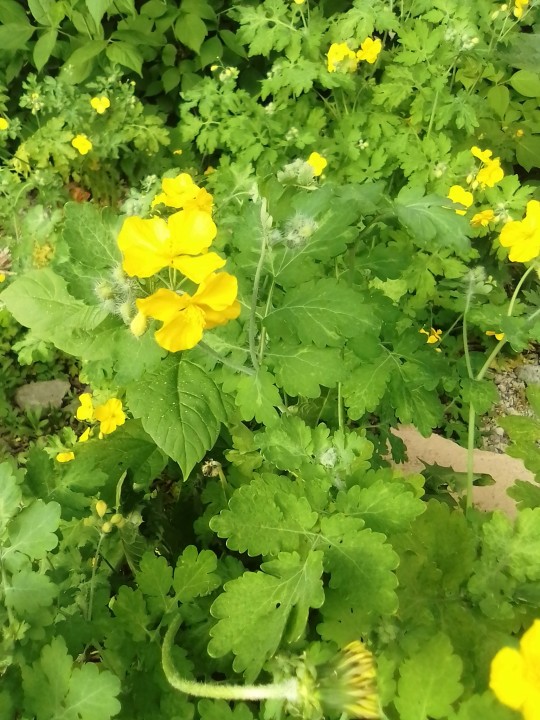


Чистоте́л (лат. Chelidonium) — олиготипный род двудольных растений семейства Маковые (Papaveraceae).
Научное название рода происходит от латинизированного греческого названия растения Chelidónium от Греч. χηλιδων — ласточка. Основанием для названия послужило то, что многие поколения врачей, начиная с древнегреческих, Авиценны и до XVIII века, считали чистотел полезным для лечения глазных заболеваний. Основана эта вера была на старинной легенде, в которой говорится о том, что ласточка лечит глаза своим ослепшим птенцам соком чистотела.
Сок чистотела содержит токсичные вещества, которые могут привести к образованию ожога на коже человека.
2 notes
·
View notes
Text

Celidonia (Chelidonium majus L., Papaveraceae)
21 notes
·
View notes